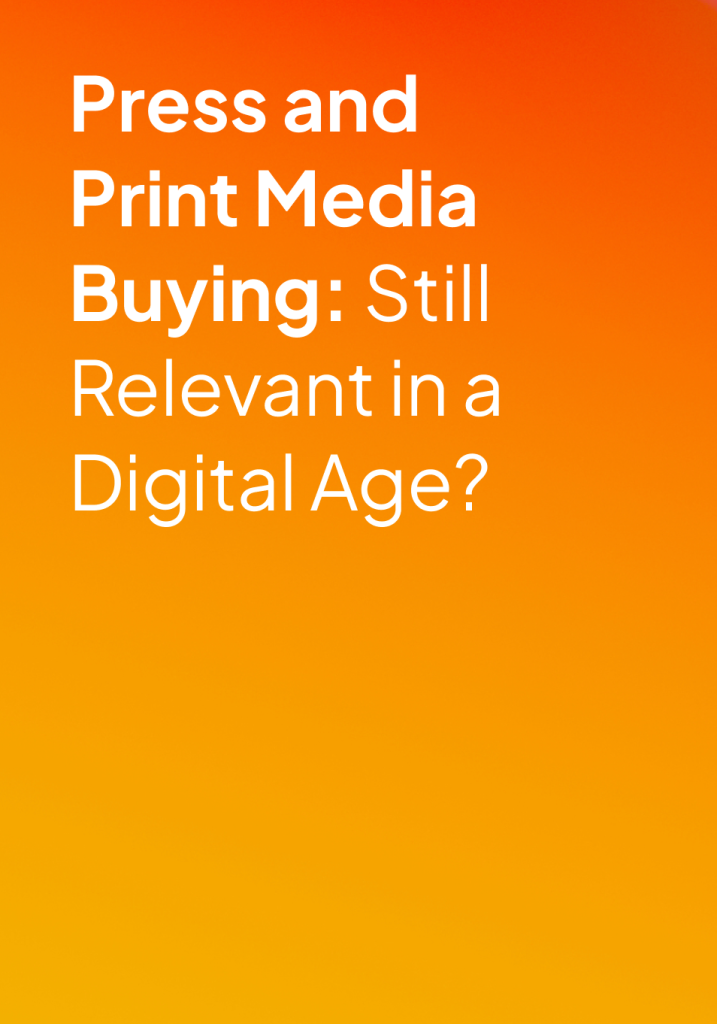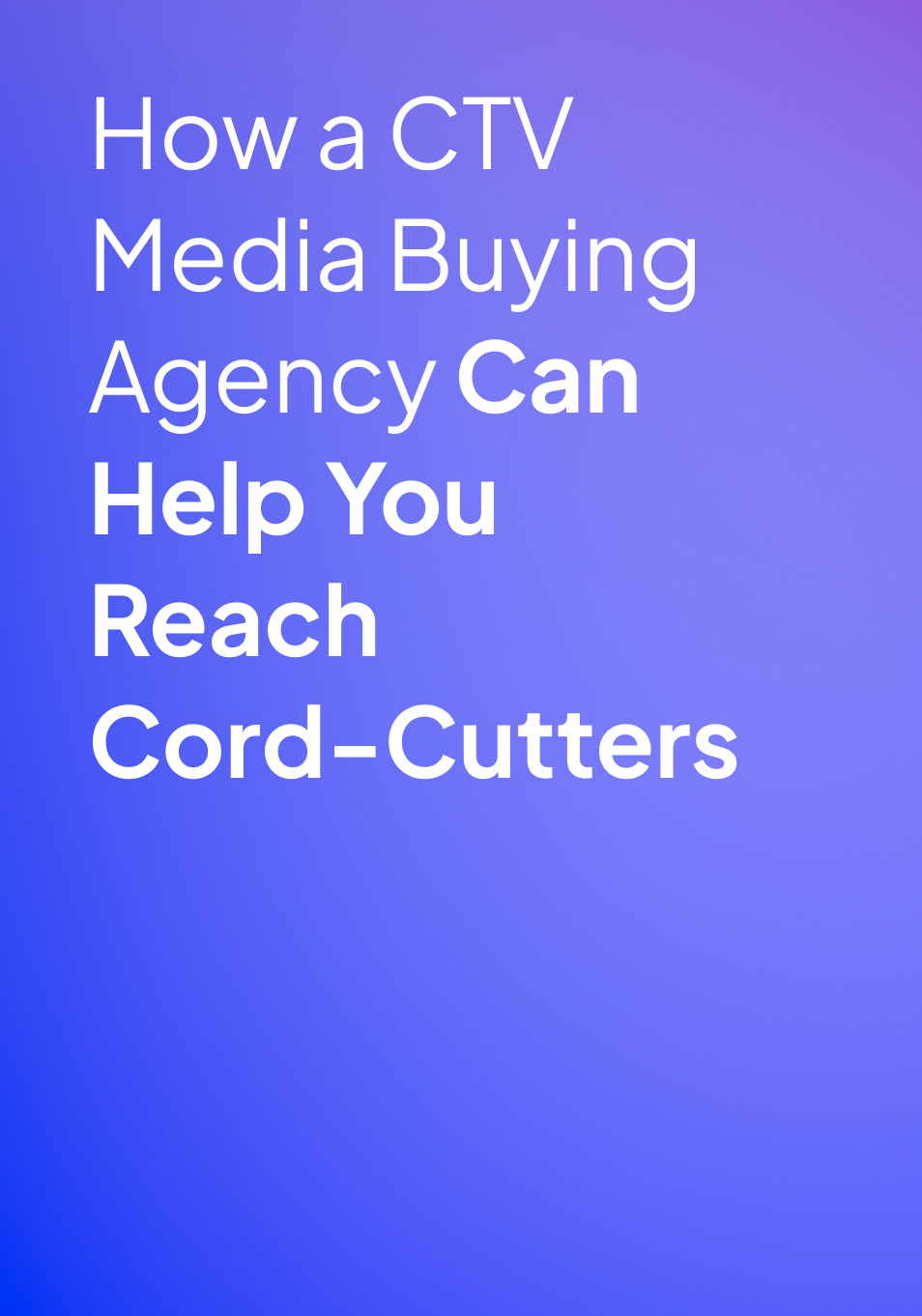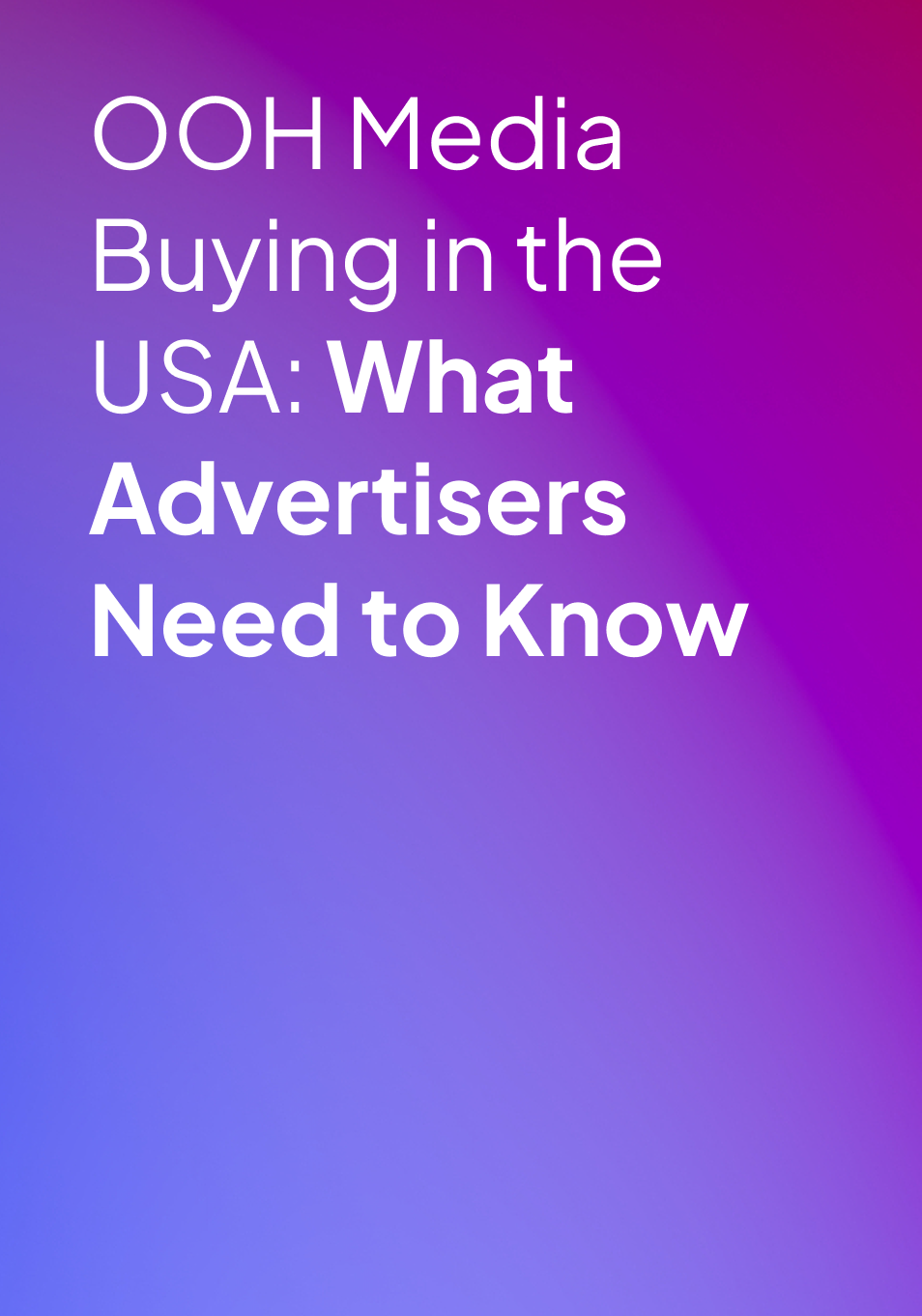Approximately 98% of the UK population has access to the internet, with around 54 million people using social media. 77% of time spent online was on a smartphone, with an average daily online time of 3 hours and 50 minutes.
Considering all this, is print media truly viable in the digital age?
What is Print Media?
Print media, or print advertising, refers to the use of printed media to communicate promotional messages and brand information. This traditional form of advertising includes a wide range of formats, including books, newspapers, magazines, posters, and flyers. Typically, newspapers and magazines host display ads and classifieds, whilst brochures and flyers work as tools for direct marketing.
What does Press and Print Media Buying Involve?
Press and print media buying refers to the strategic placement of advertisements in physical publications such as newspapers, magazines, and trade journals. Unlike digital ads, which can be skipped or blocked, print ads hold a tangible presence, often making a stronger impact on brand recall.
The Advantages of Print Advertisement
Tangibility and Credibility
Print media offers a tactile experience; the feel of a glossy magazine page can make a product listed feel more upscale, or a business card printed on high-quality, thick card can convey a more professional impression. This is an experience that digital media often overlooks. Consumers often perceive print materials as more trustworthy due to their tangible nature, which establishes a sense of legitimacy and authority for the advertised product or service.
Targeting Specific Audiences
Print advertising can still help you reach specific target audiences, even without all the new digital analytics technology. Magazines, newspapers, and other print publications often cater to niche markets or particular demographics. This allows advertisers to strategically place their ads in print materials or publications that align with their target audience’s interests and preferences.
Longevity and Permanence
Print materials have a lasting presence. Digital ads might disappear from your screen with a click, whereas print adverts stay around in homes, offices, and public spaces for longer. Magazines might be kept for future reference, and posters can be displayed for weeks or even months. This contributes to prolonged brand exposure and can help with brand recall and impact. Print media can continue to inspire readers at their leisure, as it does not rely on interruption marketing like a TV commercial or digital ad pop-up.
Our Brains Prefer it
According to a study conducted by Canadian neuromarketing firm True Impact, reading and processing print media requires 21% less cognitive effort than reading digital media. They also found that the ability to recall the content of print was 70% higher than recalling the information provided by a digital ad. This means information given through leaflets, flyers, and posters is much more likely to be remembered.
Bridging Print and Digital
Whilst we can look at all the things that print does better than digital, it’s more important to look at the ways that print and digital media can help one another. A combination of the two can leverage the tactile impact of print and the vast reach of digital. For example:
- Augmented Reality (AR) in Print: AR in print enables the creation of an immersive experience that captivates the audience by simply pointing their smartphone at the page and watching it come to life.
- QR Codes: Scanning a QR code on a brochure or business card can lead a customer to a video, a sign-up page, or exclusive online content, creating a seamless journey from print to digital.
- Personalisation: Digital printing technologies have evolved to allow for high levels of personalisation in print. Marketers can now merge data-driven digital strategies with personalised print materials, such as custom direct mail, that addresses the recipient by name and contains content tailored to their interests.
- Social Media Integration: Print campaigns increasingly include social media elements. A poster for an event might include hashtags or a QR code to encourage digital engagement and amplify the campaign’s reach.
Comparing Print vs Digital Media Buying
- Cost-Effectiveness: Digital campaigns often provide more immediate analytics and lower entry costs, while print offers higher engagement and less ad clutter.
- Measurability: Digital ads can track clicks and conversions in real-time, but print success is better measured through brand lift, awareness, and local sales.
- Consumer Perception: Digital ads are sometimes ignored as ‘noise’, whereas print feels more curated and authoritative.
Print is still relevant, even in our current digital age. People crave physical contact with things, and print media provides that sense of connection. As a more trustworthy form of marketing, print material is a great way to convey emotions and feelings through images, advertisements, and other visuals. Bringing together both print media and digital media can ensure your business gets comprehensive marketing coverage.
At The Media Planning & Buying Agency, we can secure ad placements from trusted titles to niche publications, including national newspapers, local & regional press, trade journals, magazines, and custom print inserts tailored to your audience. To get started, click here to send us a brief or click here to download our credentials.




